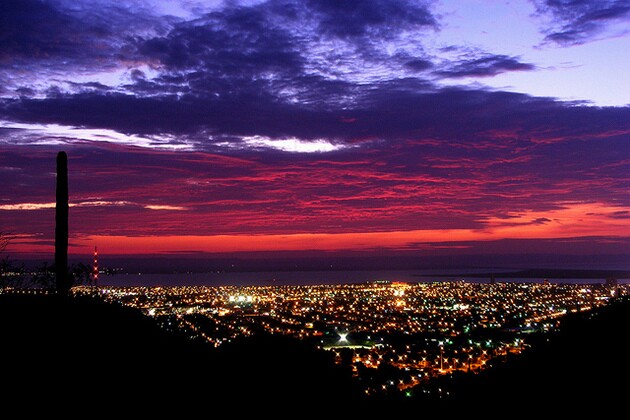Mexican City to Become 100 Percent Solar-Powered -- Kinda

La Paz, the capital city of the state of Baja California Sur, will claim the mantle of the first entirely solar-powered city in Latin America when the 25-megawatt Grupotec I solar power plant goes online in June. That plant, along with the existing 30-megawatt Aura Solar plant near the city's airport, is expected to generate as much electrical power as the city consumes.
La Paz, 100 road miles north of Cabo San Lucas, has historically relied on expensive imported fossil fuels to power the southern peninsula's isolated electrical grid. When it's completed, Grupotec I will include 11 megawatts' worth of battery storage to help provide power at night.
But that doesn't mean there won't be fossil fueled power generated in La Paz once Grupotec I goes online.
When it was completed last year, the 30-megawatt Aura Solar plant -- which occupies about 250 acres of former agricultural land near the city's airport -- became the largest utility-scale solar plant in Mexico. Grupotec I, being built by the Spanish company Grupotec, will generate its 25 megawatts on 100 acres of land in the San Antonio de Zacatal neighborhood of La Paz.
For readers unfamiliar with southern Baja, La Paz is not a sleepy little desert town. Aside from being the state capital and commercial center, it's also home to the Autonomous University of Baja California Sur, as well as three world-class institutes of marine biology.
And with 215,000 residents in the city proper, plus another 45,000 or so in surrounding communities, La Paz is about the size of San Bernardino -- which would make going 100 percent solar a remarkable achievement.
It helps, of course, that La Paz -- along with resort towns farther south around Cabo San Lucas -- had derived their power from Baja California Sur's isolated power grid, which has been almost entirely reliant on power plants run on imported diesel fuel. That made the region's electrical power subject to wild spikes in cost, depending on the global price of oil.
That local grid is operated by Mexico's government-owned electrical utility, the Comisión Federal de Electricidad or CFE, which also operates those existing diesel plants on Baja Sur's grid.
But CFE isn't planning to phase out those power plants, and in fact is expanding a diesel-fueled plant in La Paz.
As power from both the diesel and solar plants will both go into the same local grid, calling La Paz a 100-percent solar city is more a matter of creative accounting and civic pride. Power from fossil fuels will still be generated in the city of La Paz, and that power will go into a common pool from which all of southern Baja California Sur's power users will draw -- including La Paz residents and businesses.
So calling La Paz a 100-percent solar city is a little bit of a stretch. But it's a great start.





